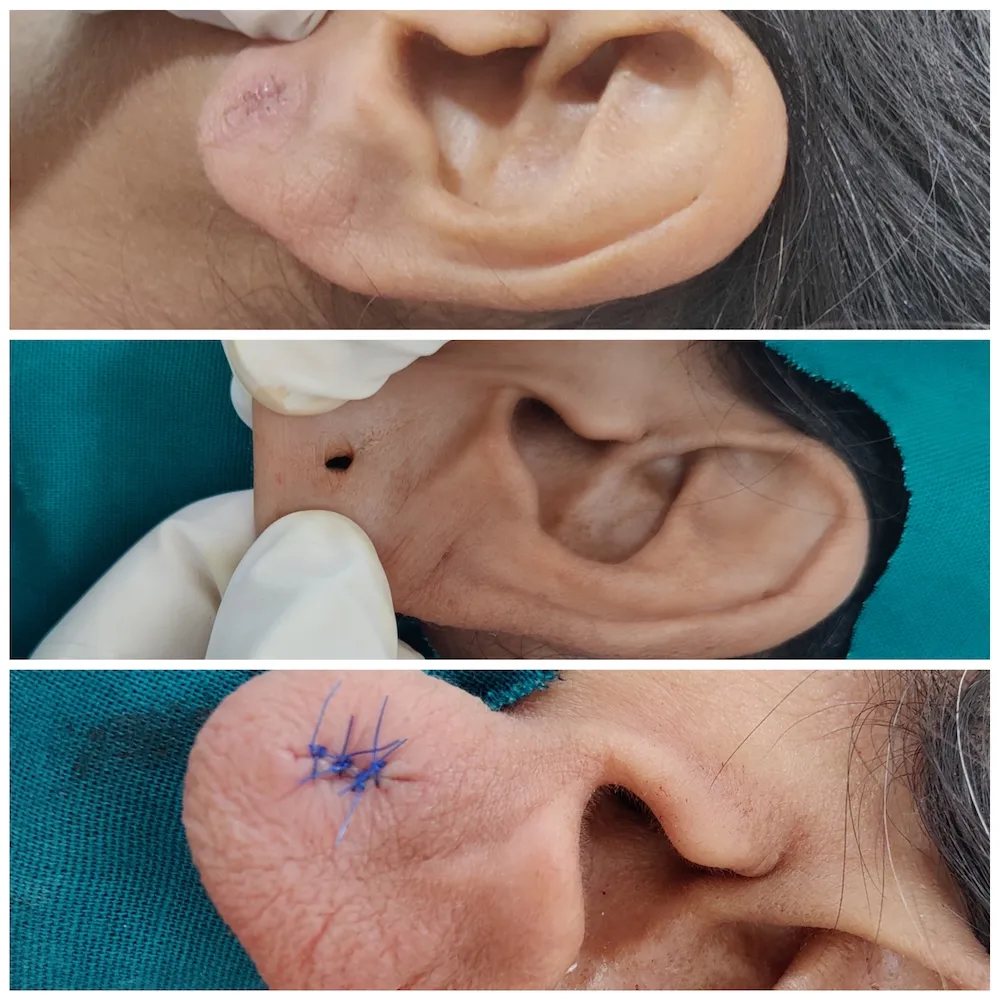Ear lobe repair is a surgical procedure aimed at correcting torn or stretched ear lobes, often caused by heavy earrings, trauma, or previous piercings. This relatively simple procedure can restore the appearance of the ear lobe and allow for new piercings if desired.
Common Medical Conditions
Torn Ear Lobes
As we age, collagen and elastin fibers break down, causing the skin to lose its firmness, resulting in wrinkles, especially around the eyes, forehead, and mouth.
Stretched Piercings
Also known as liver spots, these dark spots appear on sun-exposed areas like the face, hands, and arms due to prolonged exposure to ultraviolet (UV) rays.
Keloids
Loss of skin elasticity leads to sagging, especially around the cheeks, neck, and jawline, caused by decreased collagen production and fat redistribution.
Infected Piercings
Aging reduces the skin’s ability to retain moisture, leading to dryness and a thinning of the outer layer of skin, making it more prone to damage.
Diagnostic Tools
Dermatologists use various diagnostic techniques to identify various conditions and ensure appropriate treatment:

Visual Examination
A thorough examination of the ear lobe helps assess the extent of the damage and determine the best approach for repair.
Medical History Review
Understanding the patient’s history of ear piercings, infections, or trauma aids in developing a tailored treatment plan.
Photography
Before-and-after photographs are often taken to document the condition of the ear lobe and the results of the repair.
Treatment Options
Medical dermatology offers a wide array of treatment options:
Surgical Repair:
The most common method involves suturing the torn or stretched lobe to restore its natural shape. This procedure is typically done under local anesthesia.
Keloid Removal:
If a keloid is present, surgical excision may be performed to remove the excess tissue before closing the ear lobe.
Re-piercing:
After sufficient healing (usually several months), the ear lobe can be safely re-pierced in the same location or a different spot if desired.






Preventative Care
Choose Lightweight Earrings:
Opt for lighter earrings to prevent stretching or tearing, especially if you have had previous issues with your ear lobes.
Limit Wear Time:
Reduce the duration of wearing earrings, particularly heavy ones, to minimize stress on the ear lobe.
Proper Aftercare for New Piercings:
Follow aftercare instructions closely to avoid infections, ensuring the piercing remains clean and dry.
Monitor for Changes:
Regularly check for signs of stretching, tearing, or infection and consult a dermatologist if concerns arise.
Visit Dermatologist if –
It’s important to seek professional help if you experience:
Before & After
Explore the outcome of services that cater to a variety of needs, ensuring complete customer satisfaction.

